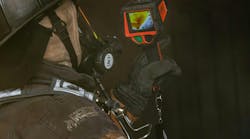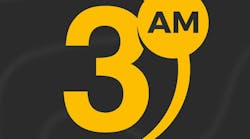The job of a fire instructor is often a thankless one, but most fire instructors I have met and worked with take this task seriously and dedicate an enormous amount of effort to provide the best training possible. Your thermal imager (TI) can help. The TI can assist in the development and explanation of new topics as well as cast a new light on old topics. Imagery from the TI can be used even if you are not teaching about thermal imaging. This month, we will look at exactly how the TI can be used to enhance the development, safety and quality of departmental training.
- Using video in training. One caveat to most of the issues outlined here is that you must be able to acquire video or still images from your TI. Most TI manufacturers provide some means of getting a video out from their thermal imagers and this can provide the lowest-cost solution. In most situations, you can use a small camcorder that will allow for an external video-in and simply plug the video-out from your TI into this video-in. Wrap the camcorder in a hand towel for insulation and drop it into a pocket of your turnout gear. Once you have recorded the information you need, simply import the video into your computer and you are ready to go. The only problem with this setup is that you must deal with the dangling wire between the imager and the camcorder. Most TI manufacturers also offer optional image or video capture. Although more expensive than the camcorder operation, they offer simplicity of operation and eliminate the dangling cord.
- Safety and accountability during live burns. Putting a TI into the hands of the fire instructor during live burns lets the instructor monitor building heat conditions and the effectiveness of hose stream selection and placement. It can also serve as a tool for monitoring student activities for unsafe or inappropriate actions. When burning in an acquired structure, the instructor can monitor the structural integrity of the ceiling as well as ensure that points of secondary egress remain unobstructed. If students are using a thermal imager as part of the evolution, then the instructor can monitor each student to ensure that the TI is being used appropriately.
- Monitor student performance in blacked-out conditions. Whether conducting night-time training or practicing search-and-rescue skills in smoky or completely darkened environments, the TI is an excellent tool to use for tracking and monitoring. Since the TI requires no light to operate, it can generate an image in places where even night vision cannot. Several years ago, we conducted wide-area-search training inside an abandoned warehouse with no exterior windows. We were able to send the teams in for search and monitor their progress and efforts using the TI. We could spot and immediately correct situations such as crew separation as soon as they occurred.
- Shed new light on old topics. I'm sure you have seen the old National Institute of Standards and Technology (NIST) video that shows a small fire that begins in a trash can, spreads to a couch and then to drapery while a narrator explains fire development. Eventually, the smoke in the room gets too thick to see what is going on, but the narrator continues to explain what is going on even though you cannot see it. With a TI, the smoke is no longer obstructive to visibility. You can use the TI to explain fire behavior, development and decay without the limitations of smoke. It lets students "close the loop" on the life cycle of a fire from a completely thermal perspective. You can literally watch the ceiling and walls absorb, dissipate and radiate heat while the convected air currents establish themselves and then watch the thermal reaction of the room and the fuel source to direct, indirect or combination attacks. If you want to address the differences between solid streams and broken streams, the TI will show you exactly the difference between reach and penetration versus rapid conversion and heat absorption. Old topics become new again, not because the physics or opinions change; rather, because the method of showing and explaining has.
- Visually display the effects of ventilation in a room. Without a TI, the only indication of effective ventilation is whether you felt it. With a TI, you can see it. Open a vertical vent and watch what happens to the thermal conditions in a room. Open a door or window and watch what happens to the thermal layers. Apply positive-pressure ventilation (PPV) and again monitor the changes. What happens when a hose stream is introduced in combination with ventilation? Because the TI sees only heat (not light), you are directly observing how the various ventilation techniques affect the fire situation. This feeds to a direct understanding of ventilation in a very visual way - different than any textbook could deliver.
Whether teaching TI skills or discussing fire behavior or ventilation tactics, the TI can go a long way toward clarity of understanding as it directly exposes the heat element to the visibility of the learner. Otherwise nebulous topics such as thermal layering or the heat absorption of a particular hose stream become tangible when you can directly see it. Adding thermal imaging to the instructor toolbox can definitely extend instructional capabilities and enhance student learning.
BRAD HARVEY is the Thermal Imaging Product Manager at Bullard. He is a veteran of public safety as a firefighter, police officer and paramedic and is certified through the Law Enforcement Thermographers' Association (LETA) as a thermal imaging instructor. Harvey has worked as a high-angle rescue instructor and is a certified rescue technician and fire instructor. If you have questions about thermal imaging, you may e-mail him at [email protected].





